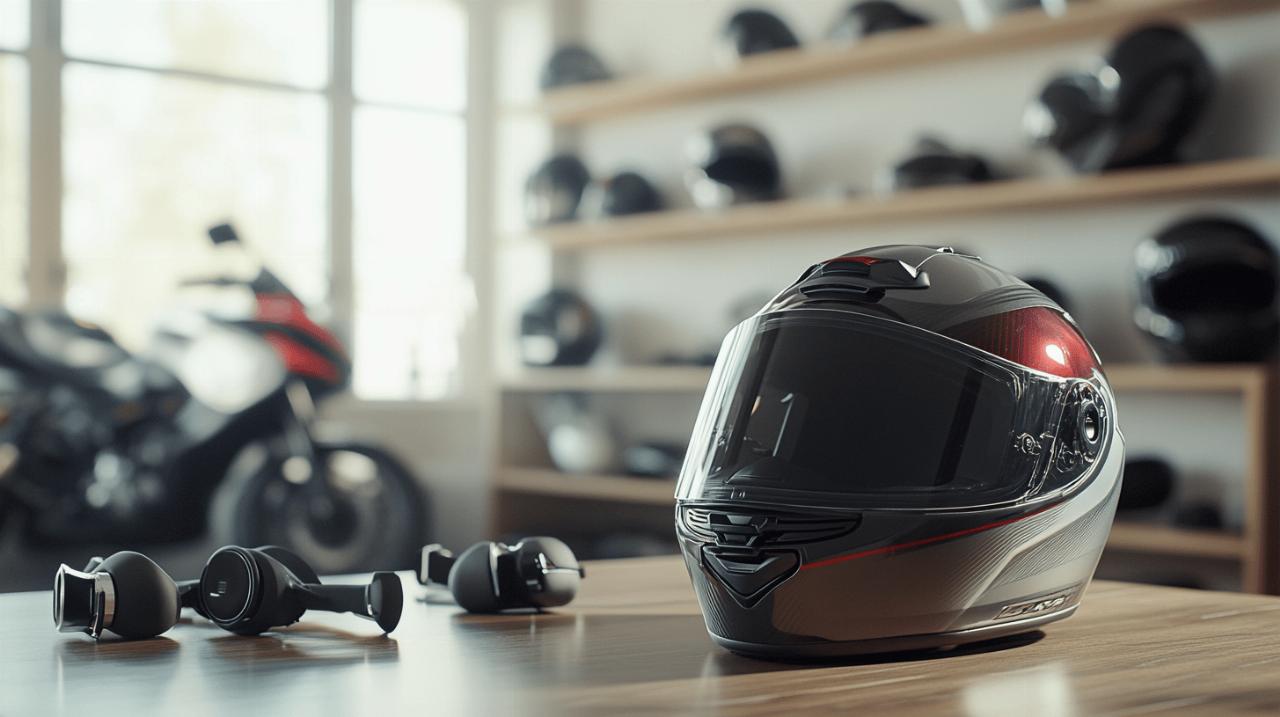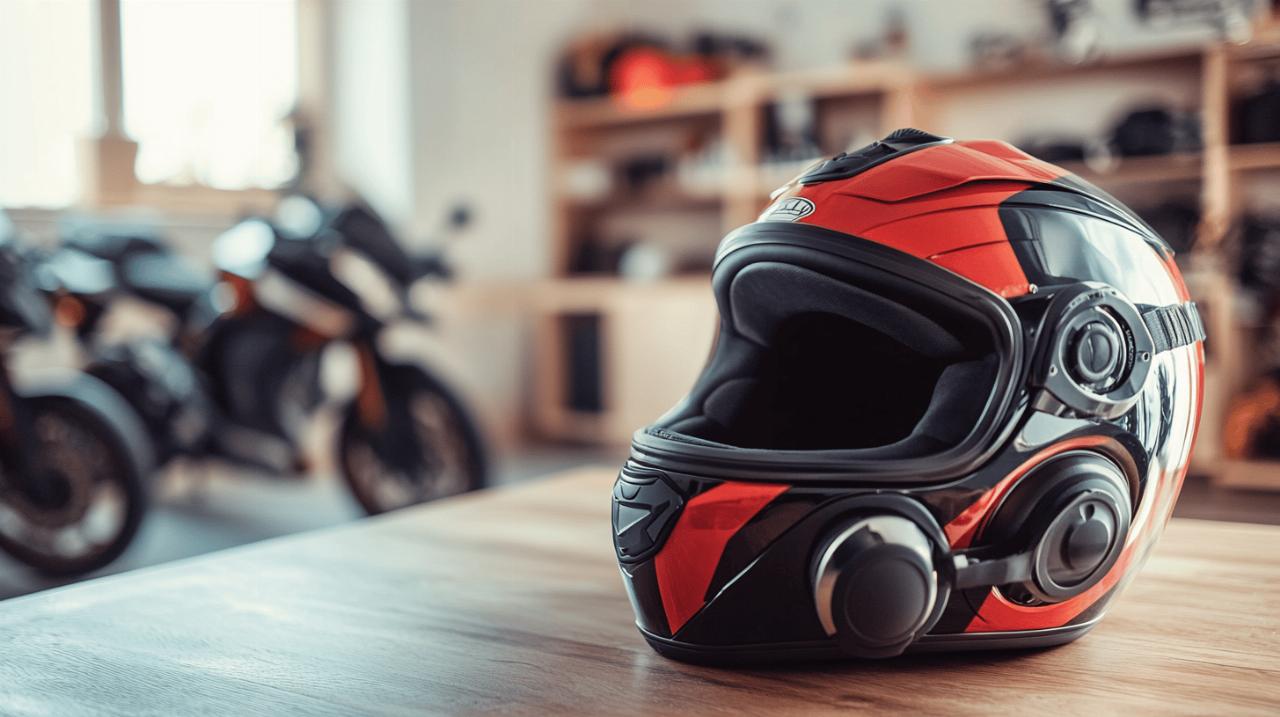For riders planning their two-wheeled adventures across Britain in 2025, maintaining clear communication whilst navigating winding roads has become more crucial than ever. Gone are the days of attempting to shout through wind noise or pulling over constantly to check directions; modern Bluetooth intercom technology has revolutionised how motorcyclists stay connected. Whether you're coordinating with fellow riders during a weekend tour through the Scottish Highlands or simply need to hear your sat nav instructions clearly, investing in a quality helmet communication system transforms the entire riding experience. The market offers numerous options ranging from budget-friendly universal systems to premium integrated solutions, each designed to meet different requirements and riding styles.
Why bluetooth intercoms are essential for modern motorcyclists
Staying Connected Without Compromising Safety on the Road
Modern motorcycle intercoms deliver a remarkable safety advantage by allowing riders to maintain focus on the road whilst managing communications effortlessly. These sophisticated devices consist of carefully positioned speakers, a sensitive microphone, a control unit, and a rechargeable battery, all working harmoniously through Bluetooth connectivity. The ability to receive sat nav directions directly into your helmet eliminates the dangerous habit of glancing down at a phone or mounted screen, keeping your eyes firmly on the traffic ahead. Voice activation technology has matured significantly, enabling riders to answer calls, adjust volume, or switch audio sources without fumbling for buttons whilst wearing gloves. Many contemporary systems incorporate advanced noise cancellation features that filter out wind roar and engine noise, ensuring every word comes through crystal clear even at motorway speeds. The convenience extends beyond navigation and phone calls; riders can stream music during long stretches of dual carriageway, transforming tedious journeys into enjoyable experiences. Battery life has improved considerably, with most quality units offering between eight and twenty hours of talk time, easily covering a full day's riding without requiring a recharge. Some models even support charging on the go using a power bank, particularly useful during multi-day tours where charging opportunities might be limited.
Enhanced group riding experience through seamless communication
Group riding dynamics change entirely when every participant can communicate instantly and naturally. Traditional hand signals, whilst charming and still useful as warnings about police ahead, simply cannot convey detailed information about route changes, hazards, or planned stops. Mesh technology represents a significant breakthrough in this regard, creating a robust network that maintains connections even when riders spread out over considerable distances. Unlike older Bluetooth systems that required line-of-sight or close proximity, mesh networks automatically reconnect dropped participants as they rejoin the group, eliminating the frustration of constant re-pairing. Systems equipped with this technology typically support connections between multiple units, with some premium options accommodating up to fifteen riders simultaneously. The range varies considerably between models, with basic systems managing around five hundred yards whilst top-tier units reach beyond a mile in open conditions. Urban environments naturally reduce these distances due to buildings and interference, making it wise to consider real-world conditions rather than manufacturer claims alone. For riding pairs and pillion communication, dual pack systems offer excellent value compared to purchasing separate units, and they typically come pre-paired from the factory for immediate use. The social aspect of riding together becomes far richer when you can share observations, discuss the route, or simply enjoy casual conversation during quieter sections. This seamless communication strengthens the bonds within riding groups and contributes to overall safety by ensuring everyone remains informed about conditions and intentions.
Leading brands: sena vs cardo – which suits your riding style
Sena smh series: reliability and user-friendly design
Sena has built a formidable reputation within the motorcycling community through consistently delivering reliable, intuitive communication systems. The Sena 20S Evo exemplifies this philosophy with its universal fitting design that adapts to virtually any helmet configuration. This particular model connects up to eight units simultaneously using Bluetooth 4.1 technology, achieving a practical range of approximately 1.2 miles in favourable conditions. Battery performance stands out as a notable strength, providing thirteen hours of continuous talk time before requiring a recharge. Voice command functionality removes the need to operate buttons whilst riding, allowing natural spoken instructions to control the system. The newer Sena 50R pushes capabilities further with Bluetooth 5 and Mesh 2.0 connectivity, offering exceptional audio clarity and rapid charging capabilities. Setup proves refreshingly straightforward, with most riders having the system operational within minutes of unboxing. The FM radio inclusion provides additional entertainment options during solo rides through areas with good reception. Another impressive offering, the SENA SPIDER ST1, delivers outstanding value whilst maintaining waterproof construction and remarkable battery longevity. Its combination of Mesh and Bluetooth 5.2 connectivity extends range up to five miles under optimal conditions, and it readily supports connections with multiple units. Sena systems generally emphasise practical functionality over complex features, making them particularly appealing to riders who value straightforward operation and consistent performance above all else.
Cardo packtalk edge: advanced features for tech-savvy riders
Cardo has positioned itself as the choice for riders seeking cutting-edge technology and premium audio experiences. The Packtalk Edge Mesh showcases this commitment through its magnetic cradle attachment system, which allows tool-free installation and effortless removal when securing your bike. Equipped with 45mm JBL speakers, the audio quality surpasses most competitors, delivering rich bass and clear treble that makes music streaming genuinely enjoyable rather than merely functional. Mesh connectivity setup for group rides proves remarkably intuitive, establishing connections almost instantly as riders approach one another. The integrated crash detection feature adds a valuable safety dimension, though riders should familiarise themselves with its operation to avoid false alarms. Cardo's Freecom 4x strikes an excellent balance for those not requiring the absolute top-tier specifications, offering universal fit compatibility and exceptionally reliable voice control. The 40mm JBL speakers still deliver impressive sound quality, whilst the extended battery life ensures all-day riding without anxiety about running flat. This model connects up to four riders comfortably, making it ideal for smaller groups exploring the countryside. The Packtalk Neo targets larger group scenarios with support for fifteen simultaneous connections and a practical range reaching one mile. Bluetooth 5.3 integration ensures stable connections with the latest smartphones and devices, whilst the noise cancelling technology maintains clarity even in challenging acoustic environments. Cardo systems typically feature glove-friendly controls with tactile feedback, allowing confident operation without needing to look down or remove your gloves. The Scala Rider Freecom series continues to attract many motorcyclists seeking that sweet spot between comprehensive features and reasonable pricing, making quality communication accessible without requiring a substantial investment.
Top bluetooth helmet kits for 2023: our comprehensive reviews
Best Value Duo Kits for Riding Pairs and Partners
 Riding partnerships, whether with a regular riding companion or a pillion passenger, benefit enormously from dedicated duo kit offerings. The Shark Sena Mesh Wave Intercom System Duo represents exceptional value at £341.99, reduced from £359.99, providing two complete units ready for immediate use. Pre-pairing means you simply attach them to your helmets and start riding, with mesh technology maintaining connection as you navigate varying terrain. The waterproof construction proves essential given British weather patterns, protecting the electronics during unexpected downpours that catch even the most weather-conscious riders. For those committed to specific helmet brands, the AGV ARK Bluetooth Intercom System offers seamless integration at £199.99, marked down from £249.99. This pricing makes premium communication accessible whilst ensuring perfect compatibility with AGV helmet designs. The Arai ACS10 Sena Bluetooth Intercom System caters to Arai enthusiasts at £143.97, reduced from £179.99, addressing the unique challenge that Arai helmets present. Arai deliberately avoids incorporating internal intercoms into their helmet designs due to safety considerations, but Sena manufactures units specifically engineered for certain Arai models, maintaining the helmet's protective integrity whilst adding communication capabilities. These duo kits eliminate concerns about cross-brand compatibility, as both units come from the same manufacturer with identical specifications. Battery charging cycles align perfectly, maintenance becomes simpler with just one type of system to understand, and troubleshooting proves straightforward since both riders experience identical functionality. Many riders find that investing in a duo kit rather than mixing brands or buying individual units saves considerable money whilst avoiding potential compatibility frustrations that can mar the riding experience.
Riding partnerships, whether with a regular riding companion or a pillion passenger, benefit enormously from dedicated duo kit offerings. The Shark Sena Mesh Wave Intercom System Duo represents exceptional value at £341.99, reduced from £359.99, providing two complete units ready for immediate use. Pre-pairing means you simply attach them to your helmets and start riding, with mesh technology maintaining connection as you navigate varying terrain. The waterproof construction proves essential given British weather patterns, protecting the electronics during unexpected downpours that catch even the most weather-conscious riders. For those committed to specific helmet brands, the AGV ARK Bluetooth Intercom System offers seamless integration at £199.99, marked down from £249.99. This pricing makes premium communication accessible whilst ensuring perfect compatibility with AGV helmet designs. The Arai ACS10 Sena Bluetooth Intercom System caters to Arai enthusiasts at £143.97, reduced from £179.99, addressing the unique challenge that Arai helmets present. Arai deliberately avoids incorporating internal intercoms into their helmet designs due to safety considerations, but Sena manufactures units specifically engineered for certain Arai models, maintaining the helmet's protective integrity whilst adding communication capabilities. These duo kits eliminate concerns about cross-brand compatibility, as both units come from the same manufacturer with identical specifications. Battery charging cycles align perfectly, maintenance becomes simpler with just one type of system to understand, and troubleshooting proves straightforward since both riders experience identical functionality. Many riders find that investing in a duo kit rather than mixing brands or buying individual units saves considerable money whilst avoiding potential compatibility frustrations that can mar the riding experience.
Premium solo units: high-performance options for individual motorcyclists
Solo riders who frequently join different groups or simply want the absolute best technology available should consider premium individual units. The Cardo Packtalk Pro stands at the pinnacle of current offerings at £404.99, justified by its magnetic cradle convenience, premium 45mm JBL speakers, comprehensive Mesh connectivity, and built-in FM radio. Testing by experienced motorcycling journalists confirms its real-world performance matches manufacturer promises, with audio quality remaining clear even at significant speeds. The Sena 50R presents compelling competition at £226.20, substantially reduced from £333.00, making flagship technology surprisingly affordable. Weighing merely 65g, it adds negligible bulk to your helmet whilst delivering Bluetooth 5 and Mesh 2.0 capabilities with a respectable 1.2-mile range between connected riders. Quick charging technology means a brief stop at a service station can replenish enough battery for several more hours of riding. For those seeking streamlined aesthetics, the Packtalk Edge Mesh Intercom features a notably slim profile that reduces wind resistance and maintains helmet appearance. Its dynamic mesh technology, Bluetooth 5.2 connectivity, and twelve-hour battery life combine to create an exceptionally capable system that handles both solo and group riding scenarios admirably. The 1.6-kilometre range ensures reliable connection across typical group riding distances, even when terrain or traffic temporarily separates riders. Individual units provide maximum flexibility for riders who participate in various group rides with different organisations or riding clubs, as modern intercom systems no longer face the compatibility barriers that once required matching brands. Mesh technology particularly excels here, creating seamless networks regardless of whether your riding companions use Cardo, Sena, or other compatible systems.
Choosing your perfect helmet communication system: key factors to consider
Sound quality, range, and battery life: technical specifications explained
Understanding technical specifications helps tremendously when comparing different systems, though marketing numbers sometimes obscure practical performance. Speaker size influences audio quality significantly, with larger drivers generally producing richer sound with better bass response. Systems featuring 45mm JBL speakers represent the current premium standard, though 40mm speakers still deliver perfectly adequate performance for most riders. Speaker placement within your helmet matters equally; positioning too far from your ears reduces volume and clarity, whilst proper installation transforms the listening experience entirely. Some manufacturers offer upgrade speakers for riders seeking enhanced audio after purchasing base models, allowing incremental improvements without replacing the entire system. Volume adjustment mechanisms deserve attention during selection, as fumbling with tiny buttons whilst wearing winter gloves causes unnecessary frustration. The best systems feature large, tactile controls that provide positive feedback through glove material, enabling confident adjustment without visual confirmation. Intercom range specifications require interpretation with healthy scepticism, as manufacturers typically quote maximum distances achieved under perfect conditions with clear line of sight. Urban riding, forest routes, or hilly terrain dramatically reduce effective range, sometimes to half the claimed distance. Selecting systems with generous range specifications provides headroom for real-world conditions, ensuring reliable communication when it matters most. Battery life considerations extend beyond simple talk time figures to include standby duration and charging speed. A system offering twenty hours of talk time but requiring six hours to recharge proves less practical than one providing twelve hours of use with a two-hour charging cycle, particularly during multi-day tours where overnight charging represents the only opportunity. Quick charge features that deliver several hours of use from thirty minutes of charging offer valuable insurance against unexpected delays or forgotten charging sessions.
Comfort and Helmet Compatibility: Ensuring a Proper Fit
The most technically impressive intercom system becomes worthless if it causes discomfort during extended rides or proves incompatible with your helmet design. Universal fit systems offer maximum flexibility, adapting to virtually any helmet through adjustable mounting brackets and slim speaker profiles. These systems attach externally to the helmet shell, making installation straightforward and allowing transfer between multiple helmets if you maintain separate lids for different riding scenarios. However, the external control unit adds aerodynamic drag and slight bulk that some riders find objectionable, particularly when riding sports bikes where streamlined profiles matter. Integrated systems eliminate this concern entirely by incorporating all components within the helmet structure itself, but they tie the communication system lifespan to the helmet. Given that helmets typically require replacement after five years due to material degradation, an integrated system forces premature retirement of potentially serviceable electronics. The Shoei GT-Air 3 exemplifies this approach at £649.99, prepared for the Sena SRL-03 intercom costing £339, creating a significant combined investment. The HJC i71 Helmet offers more accessible pricing at £229.99 whilst supporting multiple intercom options including the HJC 11B at £131.94, HJC 21B at £165.74, and HJC 50B at £272.15, providing flexibility in capability and budget. Weight considerations affect comfort substantially during all-day riding; systems exceeding 100g become noticeable and may cause pressure points depending on helmet padding configuration. The Shark D-Skwal 3 weighs 1540g and costs £208.99, recently reduced from £219.99, compatible with the Sharktooth Prime intercom at £121, creating an economical yet capable combination. The Schuberth E2 represents premium territory at £564.99, increasing from 1695g to 1850g when fitted with the Schuberth SC2 comms system costing £256.41, though the weight distribution remains comfortable due to excellent helmet design. Modern safety standards, particularly ECE 22.06, now test helmets with accessories fitted, ensuring that adding a communication system doesn't compromise protective performance. This development provides welcome reassurance that convenience and safety need not conflict, allowing riders to enhance their experience without accepting increased risk.

